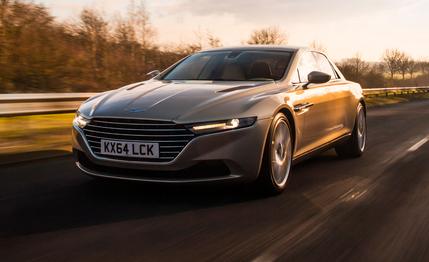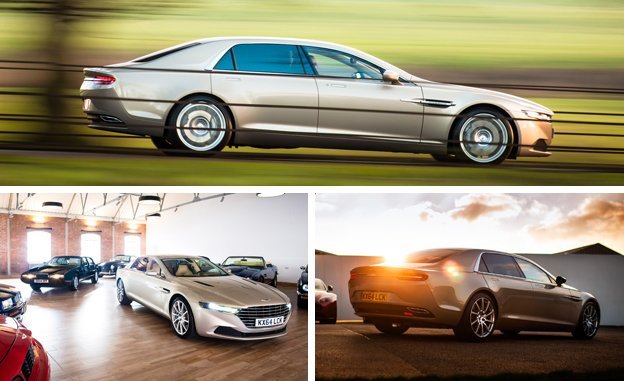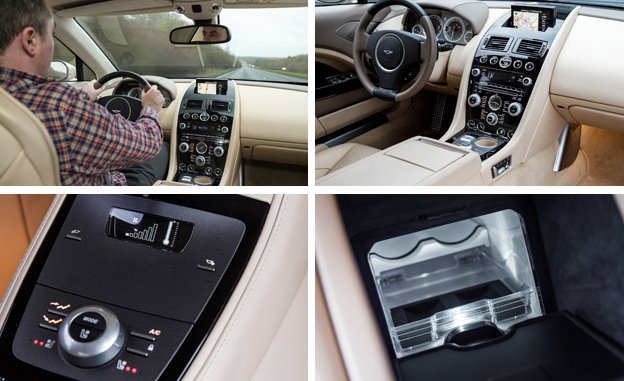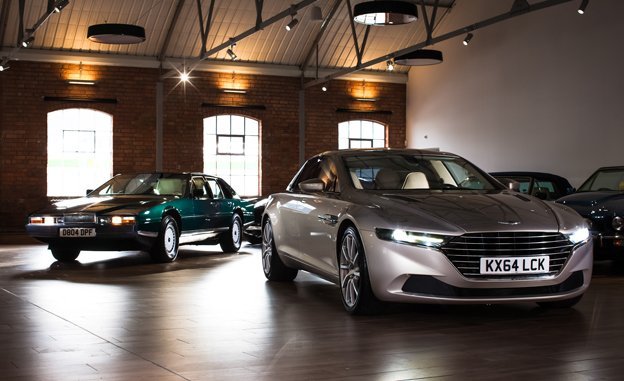
 First Drive Review
First Drive Review
Statistically speaking, this is unlikely to be the car for you. Aston Martin admits it’s entirely possible the company won’t sell a single example of the Lagonda Taraf in the U.S., despite now officially offering it here after initially restricting sales to the Middle East and then widening availability a bit early last year. Indeed, even a wave of interest from America’s billionaires won’t bring more than a handful—production has to stop by the end of this year. If you can afford the seven-figure price tag, and deal with the paperwork of personally importing it under show-and-display regulations, you could end up with a true one-off.
Rationally, it makes almost no sense. For $1 million you could instead buy every one of its obvious rivals. But then, is a 200-foot yacht a rational decision? Or a Rembrandt? A bargain compared with those nonautomotive status symbols, the Lagonda Taraf is intended to be perhaps the first of a new line of sedan models aimed at challenging Rolls-Royce and Bentley; consider it a toe-dipping exercise to gauge demand in this most rarefied part of the market.


The car we’re driving was used for the original launch in Dubai, its Topaz Gold paintwork clearly chosen to work in the bright light of the desert. But even in the gloom of the English winter it stands out like a winning lottery ticket. Presence is an overused term when applied to cars, but the Taraf has enough to be a rolling occurrence. It has the swagger of a concept car and a palpable air of menace. If Idi Amin or Nicolae Ceauşescu were still alive, they’d be trading their Grosser Mercedes 600s for one.
The external body panels are made from carbon fiber, but beneath the surface the Taraf is less radical. To describe it as an XL version of the Rapide S sedan downplays the huge effort that has gone into creating it, but it’s a fair summary of the truth. The Taraf sits on a stretched version of Aston’s familiar VH aluminum architecture, with a 7.9-inch-longer wheelbase than the Rapide. It’s powered by Aston’s usual 5.9-liter naturally aspirated V-12 engine, here in 540-hp tune. Power is sent to the rear wheels through an eight-speed automatic transaxle, which is mounted pretty much between the rear seats.
Climb into the driver’s seat and the Rapide connection is reinforced. The Taraf shares the same dashboard and switchgear, and the front door panels are barely differentiated. Sliding the seat back puts average-size drivers in uncomfortable proximity to the substantial B-pillar, limiting visibility, with the high beltline reinforcing the impression that you’re in a large coupe.


Of course, the typical Taraf buyer is only fractionally more likely to drive themselves than they are to pilot their own Learjet, which is why far more effort has been spent on the back of the car. It’s pretty much the diametric opposite of the tight-fitting Rapide S’s gloomy, cryptlike cabin, with all of the wheelbase stretch going toward extra rear legroom. It’s not as spacious as its rivals, the rear seats don’t recline and are still divided by a substantial leather-covered hillock, but it’s definitely the most spacious back seat Aston has produced since the last Lagonda.
Although the Taraf has been tuned to deliver comfort, its fundamental Aston-ness has been buried in a very shallow grave. The V-12 fires to life without the “look at me” bark that Astons deliver when started, and the throttle pedal has been recalibrated for chauffeuring with what feels like a length of elastic added. The eight-speed automatic shuffles its ratios cleanly in Drive, and the Lagonda is entirely happy to be trickled along at motorcade speeds.
But that isn’t what it’s best at. The V-12 lacks low-down torque and needs to be worked hard to deliver its best, with bigger throttle openings encouraging the gearbox to hold gears for longer (or you can take control directly via the paddles behind the steering wheel). Although quiet by Aston standards, the sonorous exhaust encourages exploration of the upper reaches of the rev range, with impressive acceleration when you do.


The chassis copes well with our quest to tear up Merrie Olde England in a most un-limo-like fashion. Aston claims the Taraf, thanks to that carbon bodywork, has an identical curb weight to the Rapide S, and although initially softer it feels almost equally fleet of foot when pushed. The hydraulic steering is light but delivers usable feedback, and the chassis produces impressive lateral grip, even on rain-slicked roads. The brakes lack much initial bite but have plenty of stopping power when worked more forcefully. It’s downright hard not to drive at the sort of speeds that would produce complaints from any rear-seat occupants—or possibly a sharp tap from a gold-tipped cane.
What the Lagonda doesn’t deliver is much of the sort of pillowy wafting that buyers of luxury mega-sedans normally expect to find. The steel springs and dampers do a good job of maintaining discipline over rougher surfaces, and the longer wheelbase certainly helps improve ride quality, but there’s none of the magic-carpet impression delivered by the best of the Taraf’s air-suspended rivals. Nor can the Lagonda match their sepulchral hush, with its noticeable wind noise and road roar at speed. It feels like a sports car disguised as a limousine, which pretty much reflects the truth behind it.
The Taraf is an enormously likable car; whether it’s seven-figure likable is another matter. But if all your neighbors drive Bentley Mulsannes, or the valet captain at your country club asks which Mercedes-Maybach S600 is yours, then this could be the way to get the exclusivity you’ve always craved.